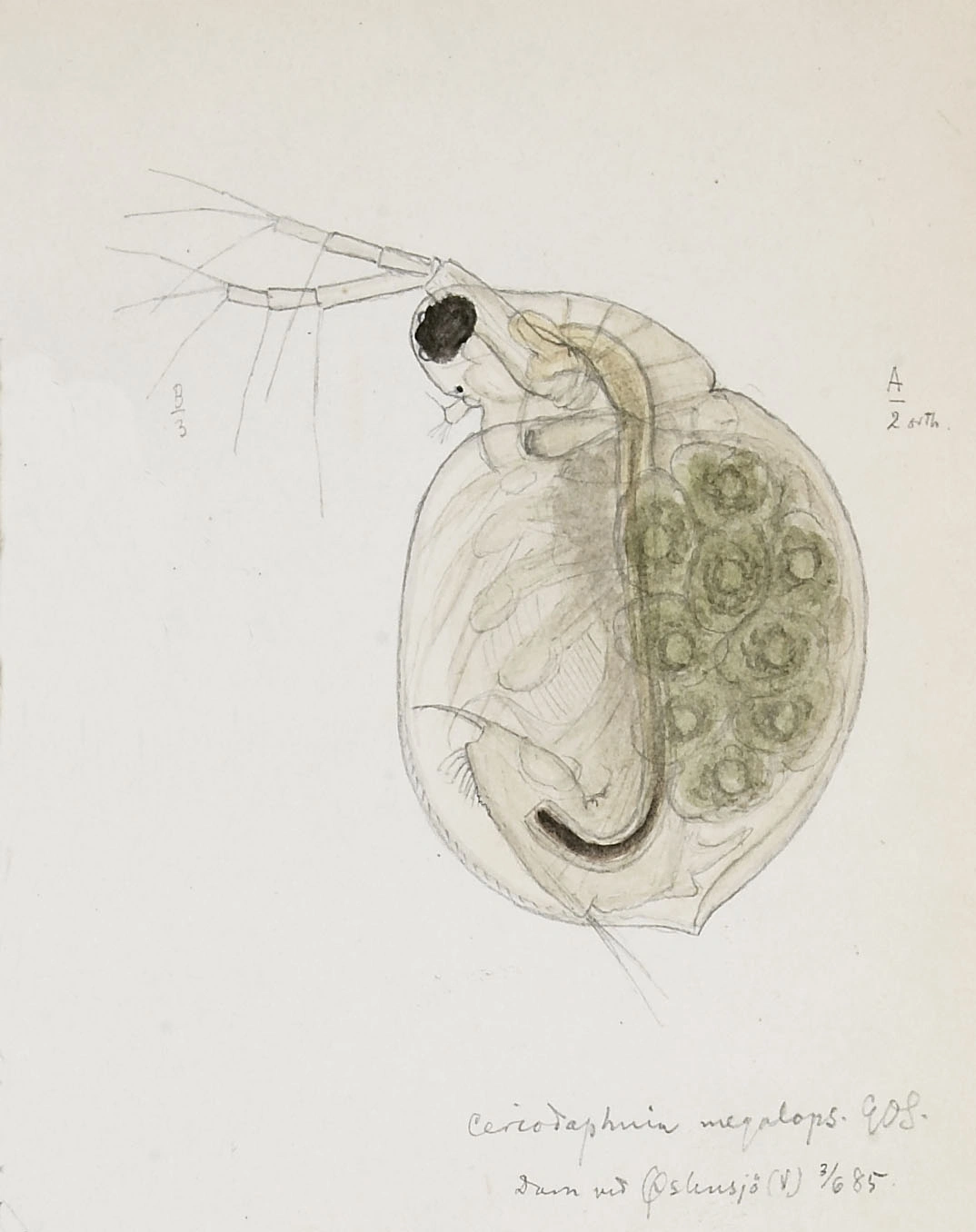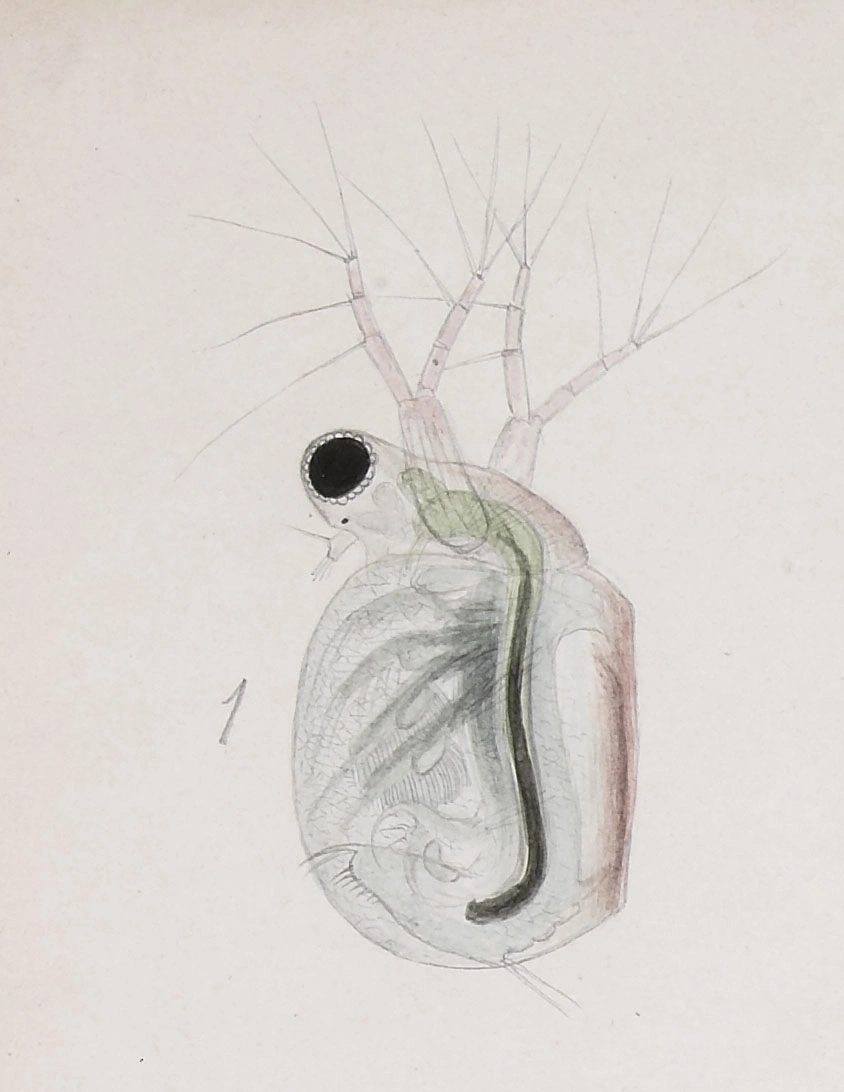Ceriodaphnia megops
Ceriodaphnia megops is characterized by the compound eye which is larger than in any other Ceriodaphnia species and the abdomen which has eight to nine long and thin spines which increase in size towards the tip. It is not found in acid water.
Key characteristics
Ceriodaphnia megops (female)
Ceriodaphnia megops (male)
The head of Ceriodaphnia megops is relatively large and the compound eye is larger than in any other Ceriodaphnia species. C. megops is also easily distinguished from other species by the abdomen which has eight to nine long and thin spines which increase in size towards the tip where the postabdomen forms an angel towards the abdominal claw. The species is often transparent, having a greyish or reddish tinge.
Female: Length 0.7–1.6 mm
Male: Length 0.6–0.8 mm
Ecology and distribution
C. megops is mainly a littoral species which is recorded from 4.0 % of the water bodies. All records are from the south-eastern part of the country. It is found in water bodies of varying size, all situated below 300 m a.s.l. pH in lakes containing C. megops is varying from 5,3 to 7,7 while it is most common in relatively electrolyte rich water (>4 mS/m).
| Vitenskapelig navn | < 4,5 | 4,5 - 4,9 | 5,0 - 5,4 | 5,5 - 5,9 | 6,0 - 6,4 | 6,5 - 7,0 | 7,0 - 7,4 | > 7,5 |
|---|---|---|---|---|---|---|---|---|
| 0 | 0 | 0,8 | 4,2 | 8 | 6,3 | 4,7 | 1,6 |
| Vitenskapelig navn | < 1,0 | 1,0 - 1,4 | 1,5 - 1,9 | 2,0 - 2,9 | 3,0 - 3,9 | 4,0 - 4,9 | 5,0 - 6,9 | 7,0 - 9,9 | > 10,0 |
|---|---|---|---|---|---|---|---|---|---|
| 0 | 0 | 0,4 | 1 | 2,6 | 9,3 | 8,2 | 8,3 | 8,4 |
| Vitenskapelig navn | < 0,01 | 0,01 - 0,09 | 0,1 - 0,9 | 1,0 - 9,9 | 10,0 - 99 | 100 - 999 | > 1000 |
|---|---|---|---|---|---|---|---|
| 1 | 2,5 | 1,9 | 5,2 | 2,7 | 5 | 15,2 |
| Vitenskapelig navn | < 100 | 100-299 | 300-499 | 500-699 | 700-999 | >1000 |
|---|---|---|---|---|---|---|
| 3,8 | 9,9 | 0 | 0 | 0 | 0 |

